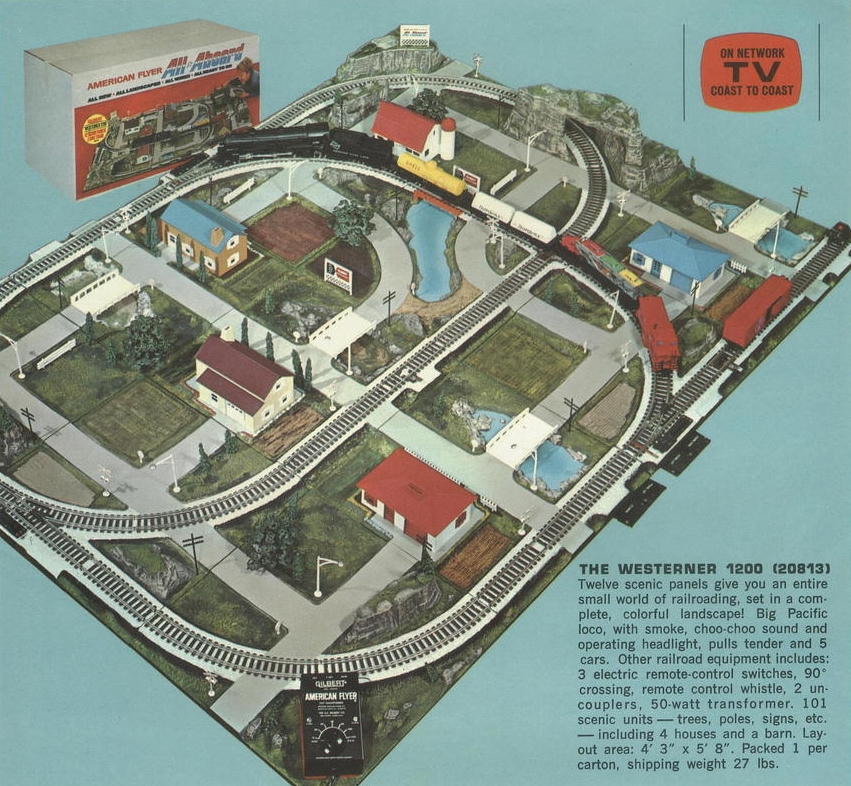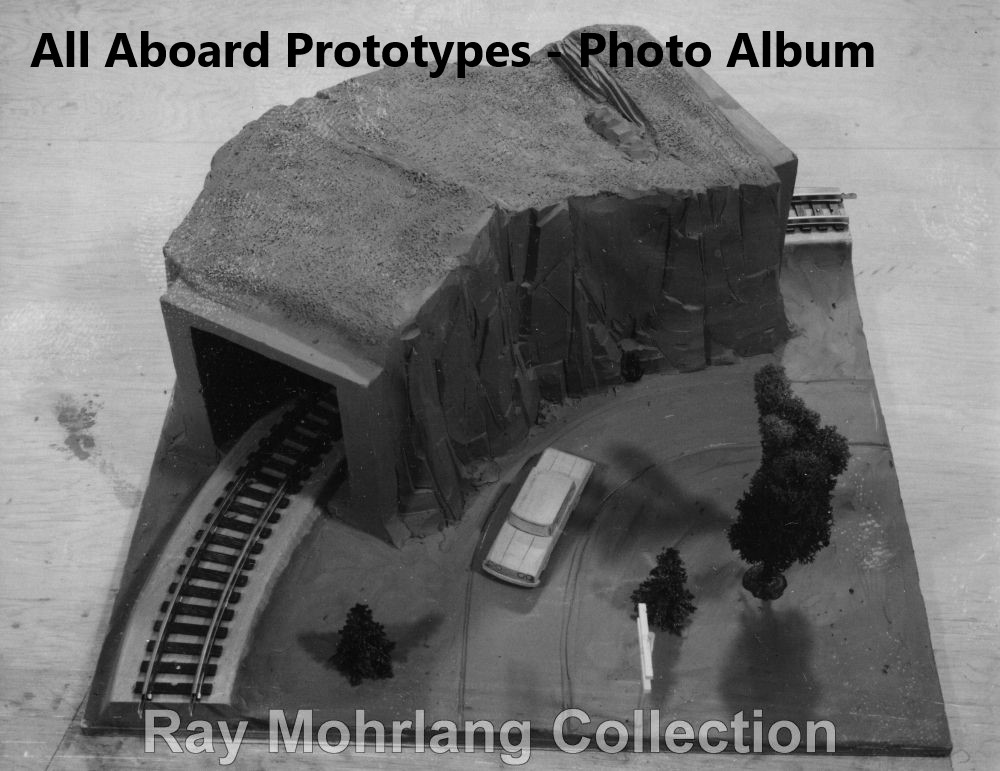All Aboard Sets
All Aboard Pre-production Prototypes


The All Aboard Panels
 In 1962, Jack Wrather and his Wrather Corporation obtained a controlling interest in Gilbert through the purchase of stock owned by the Gilbert family. Though his wealth came from the petroleum industry, Wrather was best known as a television producer whose credits included the Lone Ranger and Lassie. He was not familiar with the toy business and when he took over Gilbert, he turned to people he trusted for advice. One of these was Marvin Glass. He and his company were the face of the new toy industry. He didn't manufacture toys, but only designed them. The manufacturing was left to other companies whom he would license to produce the toys he and his team designed. He was the source of such popular toys as Ants in the Pants, Mouse Trap, and the game Operation. At Gilbert, he created the James Bond line of toys, in addition to the All Aboard sets. His business arrangement with the Wrather run Gilbert Co. is not clear, but he appears to be the force behind the All Aboard sets. On the back of each panel, in addition to the Scena-Rama patent number is the notation "© 1964 Marvin Glass and Associates." This is a bit unusual as copyrights usually relate to artistic creations, whether visual or written. Presumably this copyright relates to the art work involved in the design of the panel surfaces. The 1964 date is significant as it predates the February 4, 1965 filing of the patent that clearly covers the improvements in the panel system that constituted the All Aboard system. Ironically, that patent was granted in November 1967, at least 10 months after Gilbert had filed for bankruptcy in January 1967. It is not exactly clear what caused Glass to turn his attention to the Scena-Rama Patent which had been filed in 1958, but it is clear that he definitely improved it by his additions. First of all he dealt with the durability issue by changing the material to plastic as was envisioned as a possibility in the original patent. This allowed the layout to be a non-permanent setup which could be easily assembled, taken down, or reconfigured. Second, he solved the track length issue by making the track an integral part of the panel. Finally, he changed the setting from open hills to a small community with streets, which allowed the symmetry required for the versatile connection of the panels, but did not conflict with the design elements of the scenic setting. The Scenarama system was based on identical panels which could accommodate straight track, curved track and even switches. The All Aboard system replaced these identical panels with a limited number of unique panels. These different panel types also added variety to the completed layout. Finally, he added a secure joining mechanism for the panels which was integrated with a fixed voltage buss for powering switches and other possible accessories. As an added bonus, the reduced radius Pikemaster track that had been introduced in 1961 enabled him to reduce the panel size. The new system was closer to the instant gratification that was sought by the toy industry of that era and enabled the purchaser to have quick access to an aesthetically pleasing model railroad system. As to storage, David Dewey thinks the 24 inch panels of his Scena-rama system are easier to store because they stack more easily as the scenery is not so prominent. I have found that the All Aboard panels are also stackable, if the added scenic items, including the additional scenic features of the curved panels, are removed. David Dewey has noted that the All Aboard system traded creativity for instant gratification. There was minimal opportunity to enhance the scenic features. The scene was standardized and, aside from substituting or adding a new building, there wasn't much you could do with the setup except add panels and make it bigger. Also, like the Scena-rama panels, it didn't provide much opportunity for the integration of accessories into the layout. Maybe it was hoped that panel purchases would replace accessory purchases. As good a marketing idea as it was, it was quite a departure from the traditional Gilbert vision for toys. It was unfortunate that it came too late to save Gilbert. Interest in toy trains was waning and even this ingenious idea couldn't revive that interest. There are several excellent sites that fully explore these sets. I won't duplicate what is already there, but simply direct you to the links below. Be sure to take a look at the 1965 Press Kit at myflyertrains.net as it contains lots of information on the All Aboard sets. Catalog illustration courtesy of myflyertrains.net |
